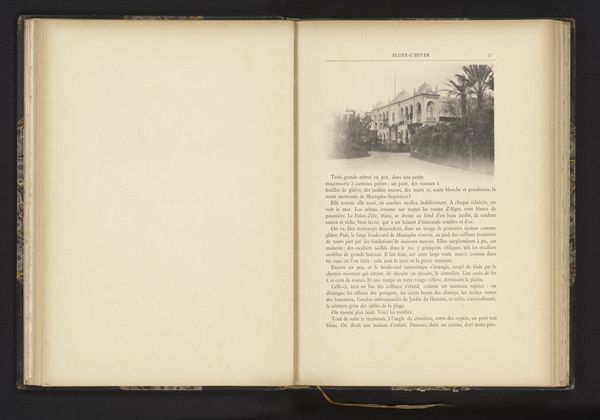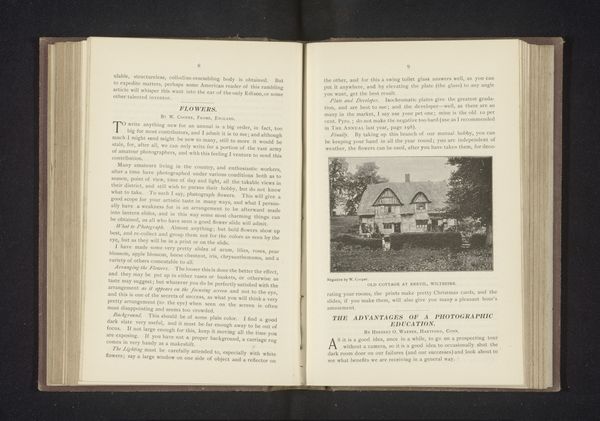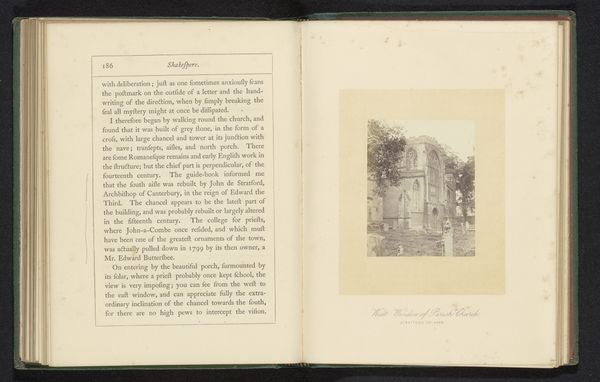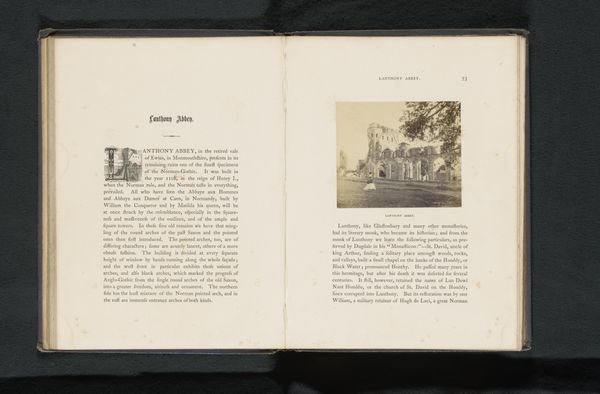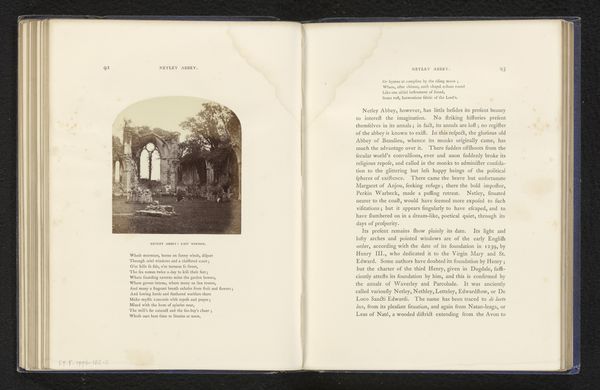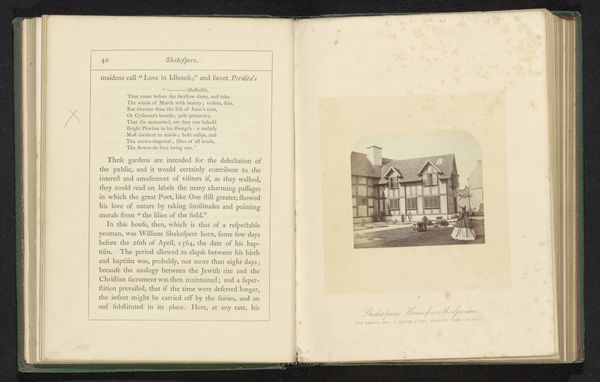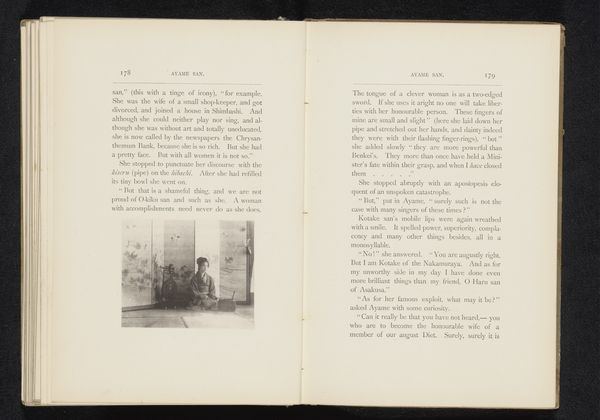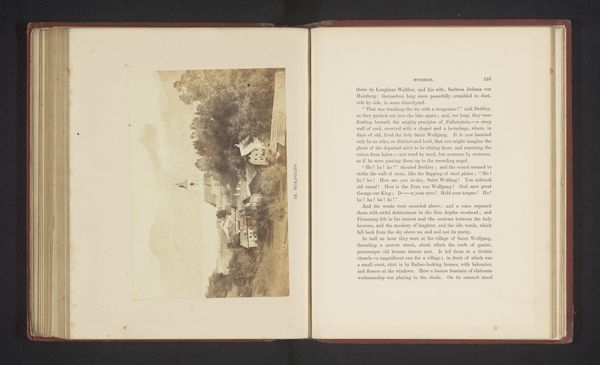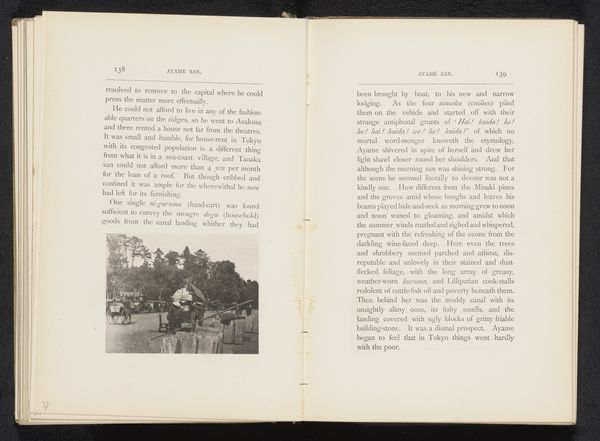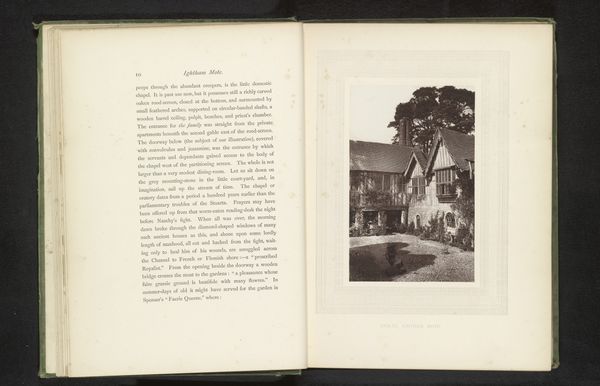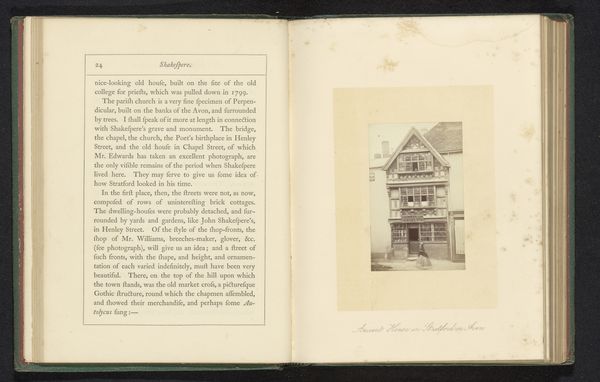
print, photography, gelatin-silver-print, albumen-print
#
medieval
# print
#
landscape
#
house
#
photography
#
personal sketchbook
#
gelatin-silver-print
#
albumen-print
Dimensions: height 78 mm, width 81 mm
Copyright: Rijks Museum: Open Domain
Curator: Here we have "Gezicht op Dryburgh Abbey," dating to before 1864. What strikes me is how it almost seems to exist outside of time, a gelatin-silver or albumen print presenting an age-old structure. Editor: It does possess that quality. Immediately, the somber lighting and dilapidated abbey create a palpable sense of melancholy. It is difficult to escape the feeling of things lost to the passage of time. Curator: Well, these albumen prints often present subjects through a picturesque lens. The image participates in romanticizing ruins, framing them as emblems of past grandeur. The social elite visiting Dryburgh Abbey undoubtedly saw a testament to Scottish history, linking themselves to it. Editor: That's precisely where my mind goes – who *is* this picture for? What stories are we choosing to tell, and what remains deliberately obscured by this idealized depiction? After all, medieval abbeys such as this also represent deep class division, feudalism, and patriarchal power. It cannot simply be “Scottish history” when Scottish history itself contains endless subtexts of who suffers for this image of national glory. Curator: But photography, even then, possessed an aura of objectivity that influenced perceptions. By capturing the abbey in this way, it becomes more than just stones; it’s evidence of a legacy. Early photography granted sites like Dryburgh Abbey new platforms through tourism and image dissemination, reinforcing their cultural importance and role in shaping national identity. Editor: I understand, and yet, it is hard to simply accept this “objective” view. To me, the act of photographing inherently involves making choices. Composition, lighting—even the decision to exclude contemporary elements—they all contribute to a specific narrative. Let’s acknowledge that while photographs may seem like neutral documents, they reflect particular ideologies, shaping the stories we choose to value. Curator: Fair enough. Still, one cannot deny that seeing prints such as this helped preserve cultural heritage by creating visual records for future generations. The romantic or problematic undercurrents were part of the historical context, no? Editor: Of course, and recognizing the selective nature of historical records—including this beautiful if complex photographic print— allows us a fuller, richer understanding of not just Dryburgh Abbey, but ourselves. Curator: A wonderfully complex intersection of legacy, truth, and memory captured in silver and light. Editor: Indeed. A visual echo of what once was, framed by the echoes of what could have been.
Comments
No comments
Be the first to comment and join the conversation on the ultimate creative platform.
